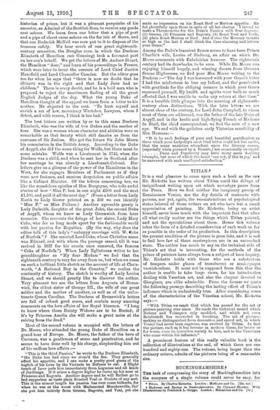TITL.A.N.*
IT is a real pleasure to come upon such a book as the one Mr. Ricketts has written about Titian amid the deluge of insignificant writing upon art which nowadays pours from the Press. Here we find neither the imaginary gossip of Renaissance Venice, nor the dry details of contracts with patrons, nor yet, again, the reconstructions of psychological states beloved of those writers on art who have but a small appreciation of painting. Mr. Ricketta, being an artist himself, never loses touch with the important fact that after all what really matter are the things which Titian painted, and not the speculations about them. Hence this volume takes the form of a detailed consideration of each work as far as possible in the order of its production. In this description the present condition of the picture is gone into, and it is sad to find how few of these masterpieces are in an untouched state. The author has much to say on the technical side of Titian's art that is interesting, for the methods of the prince of painters have always been a subject of keen inquiry. Mr. Ricketts holds with those who see a substratum of tempera under glazes of translucent or semi-opaque varnish-colour. It must not be supposed from this that the author is unable to take large views, for his introduction dealing with -Venetian art, and also the chapter devoted to Giorgione, are alike admirable. From the former we quote the following passage describing the lasting effect of Titian's influence which is undoubtedly true. After considering some of the characteristics of the Venetian school, Mr. Ricketts says :- "With Titian we reach that which has passed for the art or picture-painting ever since. He made the technical mould which Rubens and Velasquez only modified, and which not even Rembrandt has succeeded in breaking. The art of picture- making as distinguished from decorative and epical art, in which Venice had never been supreme, was evolved by Titian. In fact the picture, such as it has become in modern times, for better or for worse, owes its invention mainly to hbii, and to the Venetians who came within his influence."
A prominent feature of this really valuable book is the collection of illustrations at the end, of which there are one hundred and eighty-one. The volume, being larger than the ordinary octavo, admits of the pictures being of a reasonable
size.






































 Previous page
Previous page